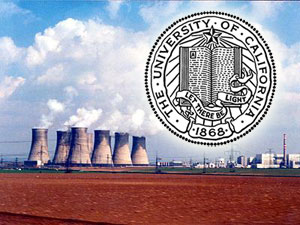
This past weekend I took a guy home early in the morning at the end of his night shift at the University of California, San Francisco‘s power plant. At first I thought he meant he works to maintain the big power generators that serve as backup for the hospital and research facilities in case of a power outage.
No, it actually turns out that UCSF generates their OWN POWER 24/7 with a small scale natural gas power plant. They find it much cheaper to operate their own power plant than to purchase power from the grid.
UCSF is not alone. A quick Google search reveals Princeton and the University of Texas at Austin both operate power and heat generation plants.
Why do they do this? Why don’t they just use grid power and avoid the hassle? Is it really cheaper to operate their own plants?
Here are a few thoughts why universities operate their own plants:
- Although the cost savings of generating their own electricity may not alone justify operating their own plant, they all seem to use the dirty exhaust as a heat generating source. The plant generates electricity and provides central heating for the campus. Now their natural gas (or coal) can be used for double duty.
- Maybe the cost of transport (borne by PG&E) increases the cost of electricity enough that generating it locally for a large customer makes more sense? My guess it probably not.
- Perhaps PG&E’s physical monopoly status allows them to charge high prices compared to the actual costs of generation. While consumers don’t notice because they use such a small amount of power, maybe large customers become aware of the artificially high costs since they have an option to generate their own power and can directly compare real costs of power generation.
- Thoughts?